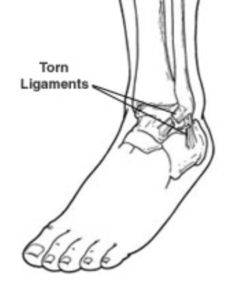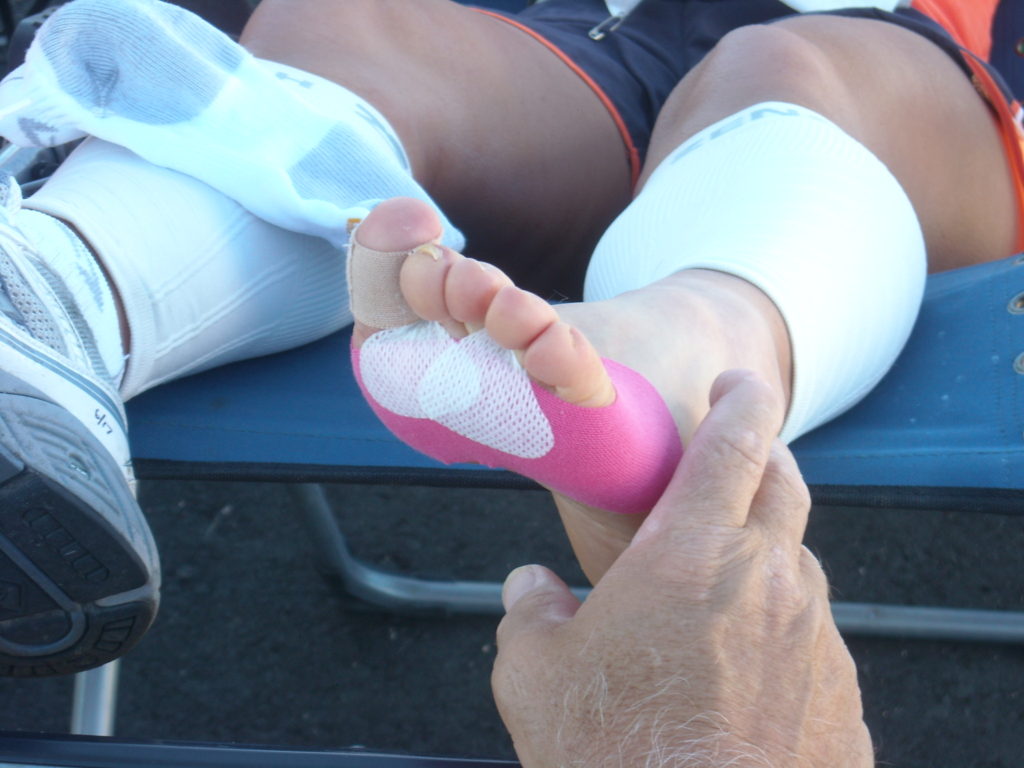COMMON CONDITIONS
Ankle Sprains | Ankle Sprain Arthritis | Ankle Sprains Treatment In Richardson, Dallas, Garland, Wylie, Murphy.
WHAT IS AN ANKLE SPRAIN?
An ankle sprain is an injury to one or more ligaments in the ankle, usually on the outside of the ankle. Ligaments are bands of tissue—like rubber bands—that connect one bone to another and bind the joints together. In the ankle joint, ligaments provide stability by limiting side-to-side movement.
Where is your ankle located?
An ankle is located at the junction of your leg and foot. It extends down to the foot.
Some ankle sprains are much worse than others. The severity of an ankle sprain depends on whether the ligament is stretched, partially torn or completely torn, as well as on the number of ligaments involved. Ankle sprains are not the same as strains, which affect muscles rather than ligaments.
CAUSES OF ANKLE SPRAIN:
Sprain happens when your ankle is compelled to move out of its typical position, which can make at least one of the ankle’s tendons stretch, somewhat tear or tear totally.

Reasons for ankle sprain may include:
- A fall that makes your ankle to twist or contort.
- Landing awkwardly on your foot after jumping or turning.
- Walking or practicing on an uneven surface.
- Someone else stepping or landing on your foot during sports activities.
SYMPTOMS OF ANKLE SPRAIN:
The symptoms of ankle sprains may include:
- Pain or soreness.
- Swelling around ankle and on foot.
- Bruising.
- Difficulty walking.
- Stiffness in the joint.
Ankle fractures are common injuries most often caused by the ankle rolling inward or outward. Many people mistake an ankle fracture for an ankle sprain, but they are quite different and therefore require an accurate and early diagnosis. They sometimes occur simultaneously
TYPE OF SPRAINS:
There are several types of sprains depending upon their severity.
- Grade I ankle sprain: Lateral ligaments are over stretched in this grade. Which do not take much time to heal.
- Grade II ankle sprain: One or more ligaments are partially torn.
- Grade III ankle sprain: One or more ligaments are completely torn. Takes a lot of time to heal.
When you hear a pop in your ankle it means you have sprained your ankle. 80% of sprains occur from inversion of your foot or inward rolling and this can produce this pop sound.

RISK FACTORS:
Some factors that increase your risk of ankle sprain include:
- Sports/Intense Activity: Ankle sprain are a common sports related injury, especially in sports that require hopping, cutting activity, or rolling or twisting of the foot, for example, basketball, tennis, football, soccer and trail running.
- Uneven surfaces: Running on uneven surfaces or in poor conditions may increase the risk of an ankle sprain.
- Prior ankle injury : Whenever you have injured your ankle or had another kind of lower leg injury, there is an higher likelihood of subsequent injury.
- Poor physical condition: Poor stability, strength, or flexibility in the lower legs may increase the danger of an injury while participating in sports.
- Improper shoes. Shoes that don’t fit appropriately or aren’t proper for a movement, make ankles more vulnerable to injury.
Ankle sprains may lead to arthritis if they do not heal properly. So, appropriate treatment is required otherwise it can lead to ankle instability and malalignment of ankle joint or recurrent sprains on the same ankle. Ankle arthritis is irreversible so prevention is key.
ANKLE SPRAINS TREATMENT:
What to do when you roll your ankle? When you have an ankle sprain, rehabilitation is crucial—and it starts the moment your treatment begins. Your foot and ankle surgeon may recommend one or more of the following treatment options:
- Rest. Stay off the injured ankle. Walking may cause further injury.
- Ice. Apply an ice pack to the injured area, placing a thin towel between the ice and the skin. Use ice for 20 minutes and then wait at least 40 minutes before icing again.
- Compression. An elastic wrap may be recommended to control swelling.
- Elevation. The ankle should be raised slightly above the level of your heart to reduce swelling.
- Early physical therapy. Your doctor will start you on a rehabilitation program as soon as possible to promote healing and increase your range of motion. This includes doing prescribed exercises.
- Medications. Nonsteroidal anti-inflammatory drugs (NSAIDs), such as ibuprofen, may be recommended to reduce pain and inflammation. In some cases, prescription pain medications are needed to provide adequate relief.
WHEN IS SURGERY NEEDED?
Acute ankle sprains rarely require surgical intervention. In instances were a patient suffers multiple consecutive ankle sprains, the ligaments may heal in a stretched-out position. This condition is called ankle instability and can be painful and debilitating. In these cases, our surgeons may recommend surgical repair of the ligament in order to restore function.
If you are looking for a the best physician for your foot and ankle problems, Dr. Raymond Delpak has immense experience dealing with this condition.
ANKLE SPRAINS | ANKLE SPRAIN ARTHRITIS | ANKLE SPRAINS TREATMENT IN RICHARDSON, DALLAS, GARLAND, WYLIE, MURPHY.
Dr. Raymond Delpak works with patients to determine the best course of action for treating foot and ankle problems. We use the most advanced techniques possible. If you would like to learn more, please visit us TX Foot and Ankle Consultants or schedule an appointment.
SUBSCRIBE TO OUR NEWSLETTER
*for updates on our medical equipment only

